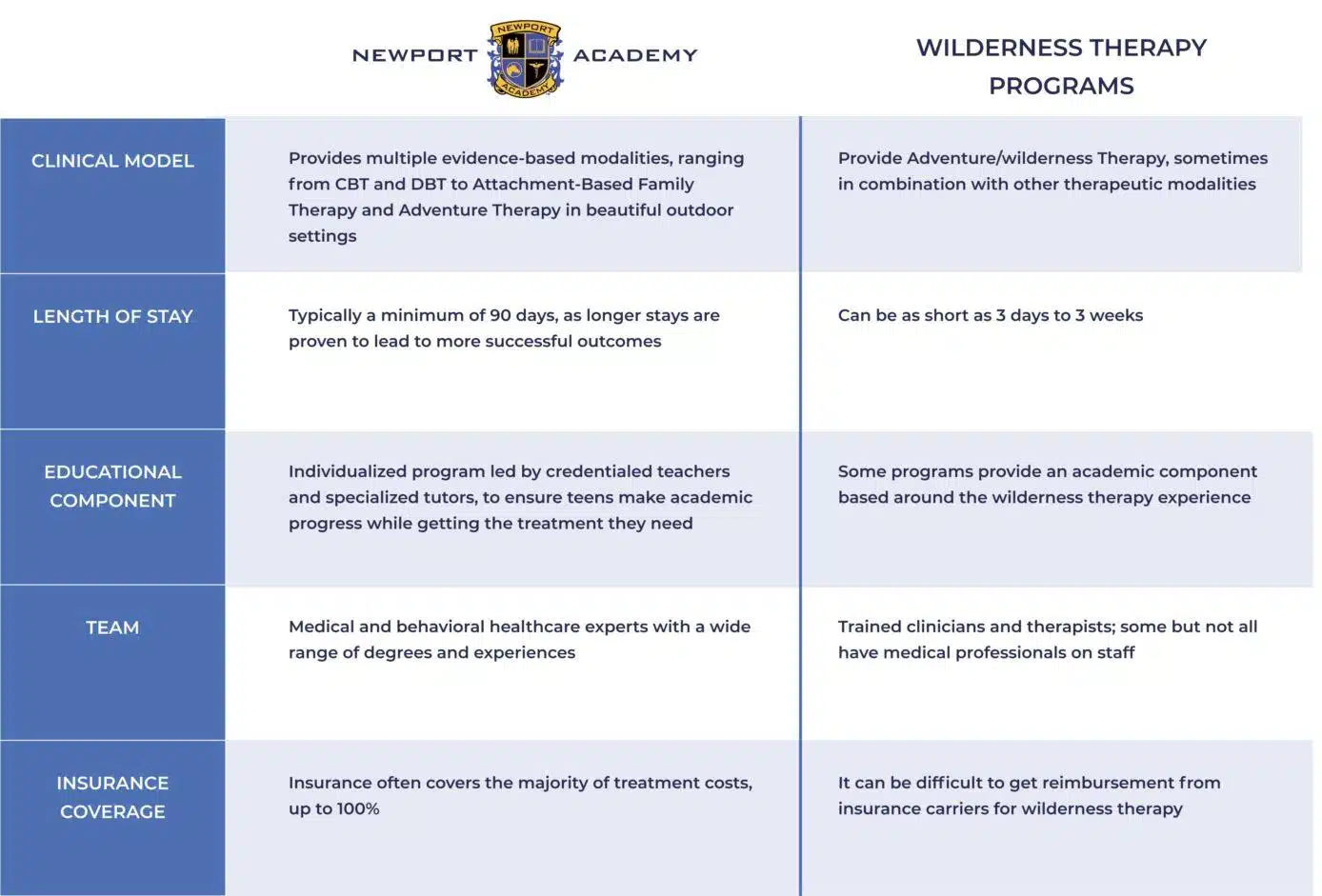More California teens than ever before are experiencing mental health symptoms. Rates of teen depression, anxiety, and suicidal ideation in the state are rising rapidly, exacerbated by the impact of years of collective trauma and distress.
According to Mental Health America (MHA)’s 2023 rankings, 15 percent of California teens—half a million adolescents—had at least one major depressive episode during the year. In addition, nearly 1 in 10 California teens had severe major depressive disorder.
But due to limited access to California mental health treatment centers, 70 percent of California teens with depression do not receive any mental health services, MHA reports. Newport Academy is working to fill that gap by expanding our residential and outpatient treatment centers in California, serving teens ages 12–18 and their families.
Treating Tech Addiction in California Youth

Long-Term Effects of Virtual Schooling
Increased time spent on screens over the last two years has exacerbated device-related dysfunctions, such as gaming disorder and social media addiction, among California youth. This population was already at high risk due to its proximity to Silicon Valley, and the resulting number of parents who work in the tech industry. In fact, many former technology industry executives have spoken out about the industry’s use of artificial technology that encourages teen tech addiction. The problem has become so extreme among all age groups that a trend known as “dopamine fasting” was popularized in California.

Healthy Device Management
“Constant scrolling or gaming appears to create dopamine-related changes in the nervous system,” says Don Grant, PhD, Newport’s National Advisor of Healthy Device Management and former Director of Outpatient Services for Newport’s teen program in Santa Monica, California. “These actions target our limbic system through its engaged susceptibility to intermittent variable rewards—the same basic idea behind slot machine design—that get us ‘hooked’ and coming back for more.”
The teen brain is particularly vulnerable to these changes in brain functioning, as the prefrontal cortex is not yet mature. Research shows that teen tech addiction can catalyze or amplify a wide range of negative mental health effects, from poor self-image and eating disorders to depression and anxiety.
California Mental Health Treatment Statistics
Each year, Mental Health America ranks all 50 states and Washington DC in terms of mental health, substance abuse, and access to care. MHA’s 2023 report put California at number 46 among the 50 states and the District of Columbia.
The state of California ranked 46 out of 50 states in terms of access to care, according to Mental Health America.
MHA’s California statistics also show that 70 percent of teens aren’t getting care for their depression or other mental health concerns. Due to the shortage of Northern CA and Southern CA mental health treatment centers, only about a quarter of the state’s teens with mental illness receive any consistent mental care at all. And only 30 percent of California teens have insurance coverage for mental or emotional problems.
“Constant scrolling or gaming appears to create dopamine-related changes in the nervous system.”
—Don Grant, PhD, Newport’s National Advisor of Healthy Device Management
Limited Care for Teen Substance Use in California
Looking at substance abuse statistics in California, MHA reports that 7 percent of California teens—200,000 adolescents—suffered from substance use disorder last year. In addition, a Community Health Needs Assessment examining Marin County mental health found that this region’s rates of substance use among adolescents are notably higher than the rest of the state. For teen drug use, the rate was 49 per capita in Marin vs. 38 in California as a whole.
Moreover, the California Children’s Report Card, published by the Oakland-based advocacy organization Children Now, gave the state a D- in terms of its substance use treatment services for youth. Deaths due to drug overdoses—specifically fentanyl overdoses—spiked during the pandemic. And the number of drug overdose fatalities among the state’s young people tripled between 2015 and 2020.
But fewer than 10 percent of California youth who need substance use disorder treatment receive it. “California is failing to proactively help children stay away from harmful substances and does not systematically provide treatment services to children and youth with substance use disorders,” the Report Card stated.
The Increasing Suicide Risk for California Teens
Rates of anxiety and depression among children in California went up by 70 percent from 2016 to 2020, according to 2022 research by the Annie E. Casey Foundation. In tandem with these increases, suicide rates among teens in California have steadily risen between 2016 and 2020, especially among male adolescents. Suicide rates among California youth increased by 20 percent in 2020, the California Department of Public Health reports.
Data from the California Healthy Kids Survey and California Department of Education shows that about 20 percent of female high school students and 13 percent of males have seriously considered attempting suicide. For lesbian, gay, and bisexual students in California, the proportion is much higher, with close to half seriously considering suicide. In addition, the Report Card found that suicide rates among Black youth have dramatically increased over the past decade. The suicide rate among California’s Black youth, ages 10–24, doubled from 6 out of 100,000 in 2014 to 12 out of 1000,000 in 2020.
15%
of California teens had at least one major depressive episode
284,000
teens had severe major depressive disorder
4.6%
suffered from substance abuse disorder
Treatment works.
Effective treatments for mental health disorders, especially if they begin soon after symptoms appear, can help reduce the impact on an adolescent’s life. hhs.gov
2x
Suicide rates among Black youth in California doubled between 2014 and 2020.
20%
of female high school students and 13 percent of males have seriously considered attempting suicide.
Newport Academy’s California Teen Treatment Centers
Newport Academy is responding to the need for California mental health resources by expanding our programming in this region. We have adolescent residential treatment centers in California, as well as outpatient programs. Newport’s mental health services in California address the underlying trauma and attachment wounds that catalyze mental health and co-occurring disorders. Our Northern California treatment centers and Southern California treatment centers provide comprehensive and individualized care to address anxiety, depression, substance abuse, self-harm, and other maladaptive behaviors.
Each client in our teen treatment centers in California is given a tailored treatment plan, designed by a team of medical and behavioral healthcare experts. Teens’ daily schedules include a variety of evidence-based clinical, experiential, and academic modalities. Treatment is provided in a supportive, compassionate environment where teens can connect with peers and mentors, ending the isolation and loneliness that is so prevalent among today’s young people.
Our Treatment Locations and Modalities in California
Our licensed clinicians specialize in treating trauma and related issues through proven modalities such as Cognitive Behavioral Therapy, Dialectical Behavioral Therapy, Acceptance and Commitment Therapy, EFT, and EMDR. Our approach also involves family in the healing process, and our clinicians use the groundbreaking Attachment-Based Family Therapy model to repair parent-child relationships, an essential component of sustainable recovery.
Our beautiful California adolescent residential treatment centers have dedicated spaces for experiential modalities such as music and art therapy, yoga, meditation, and other mindfulness practices. In both our residential program and Partial Hospitalization Program, clients spend structured time in the classroom each day, and with tutors as necessary, so they can continue to make academic progress while receiving the treatment they need.
In addition, Newport Academy provides specialized teen OCD treatment in California, as well as specialized treatment for eating disorders.
Newport Academy’s Approach as Compared to Wilderness Therapy Programs

Learn More About Our Treatment Centers in California
Whether a teen needs the healing environment provided by residential care, or the structure and support of an outpatient program, we can help you find a California mental health treatment center that will best support them. We’ve recently expanded our treatment programs in the state in order to serve the growing number of California teens and families in need of mental healthcare.
Call us today at 877-926-2335 to find out how we can help your teen—we’re here 24 hours a day, 7 days a week. Our Admissions experts work with families and referring professionals to find the right fit for teens who need comprehensive care. Contact us now to get started on the path to healing.






